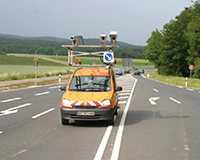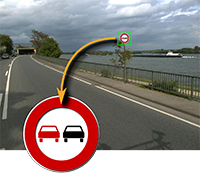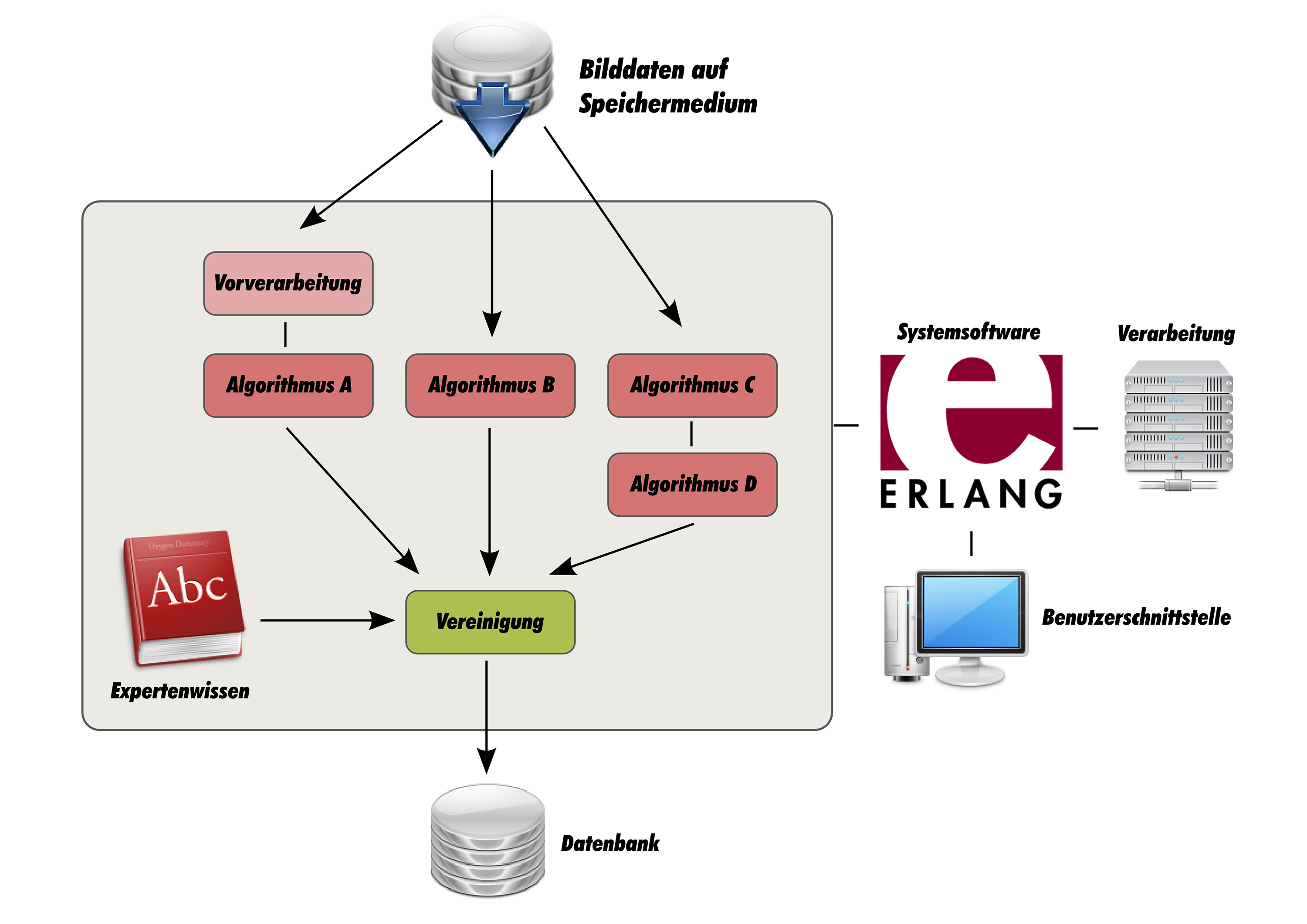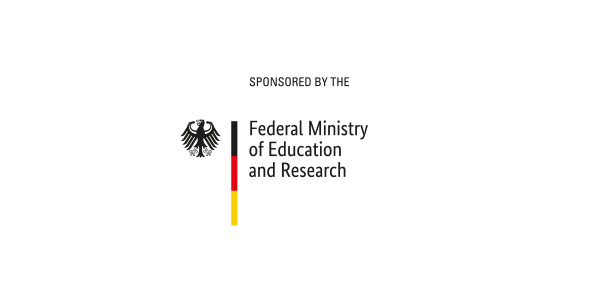
Project Description
Our goal was to automatically recognize and locate important traffic scene objects like traffic signs, lane markings and protection planks. Such information is very valuable to ensure driver safety. It is also helpful for the optimization of traffic routes.
Our approach allows for frequent inspections of traffic scenes. For example, we can determine if all traffic signs are still located at their correct positions or if they have been damaged and became unreadable due to environmental influences. We analyze images from street inspection cars, which are equipped with multiple cameras. The detected traffic signs are located based on GPS information and visual distance measurements.


